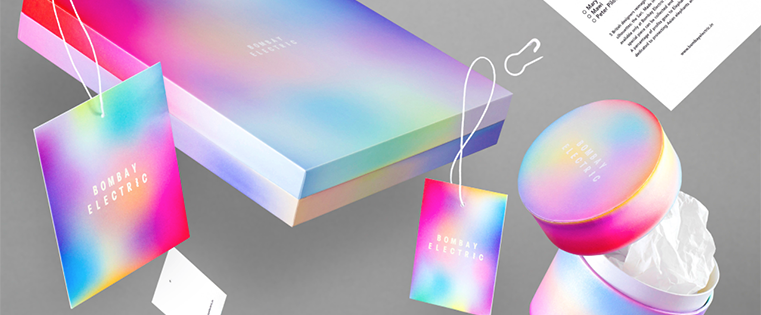The brands at the top of the food chain are those we associate with a specific problem. For example, if I want running shoes, I go to Hoka. For skincare, I’m a Byoma girlie, and if I’m craving apple juice, Innocent cures my thirst.
But how do these brands differentiate in a crowded market space? What makes them so memorable?
In this article, I’ll share my favorite examples of companies smashing brand differentiation and give you actionable tips on how to stand out from the crowd.
Table of Contents
- What is brand differentiation?
- Brand Differentiation Examples: 6 Powerful Ways to Differentiate Your Brand
- The 8 Steps to Brand Differentiation
What is brand differentiation?
Brand differentiation is how you carve out mental real estate in a market where everyone‘s screaming for attention. It’s not just your logo, your tagline, or your mission statement. It's the specific reason someone chooses you over a competitor when both products could technically solve their problem.
Brand Differentiation Examples: 6 Powerful Ways to Differentiate Your Brand
1. Revolut: Build a product people can’t shut up about.
Differentiator: Product-led growth that turns customers into advocates
In a previous Moz Whiteboard Friday, I said the most important way to build brand authority is to have a great product. There’s no workaround for this. A great product keeps people in-app and coming back. That’s why I love Revolut.

When I moved to the UK in 2022 and needed a banking solution, all my friends pointed me to the app. Revolut offered multicurrency accounts backed by frictionless banking, and I’d never seen anything like it.
It feels like an everyday app that combines banking, investment, and features you’d only get on a typical credit card.
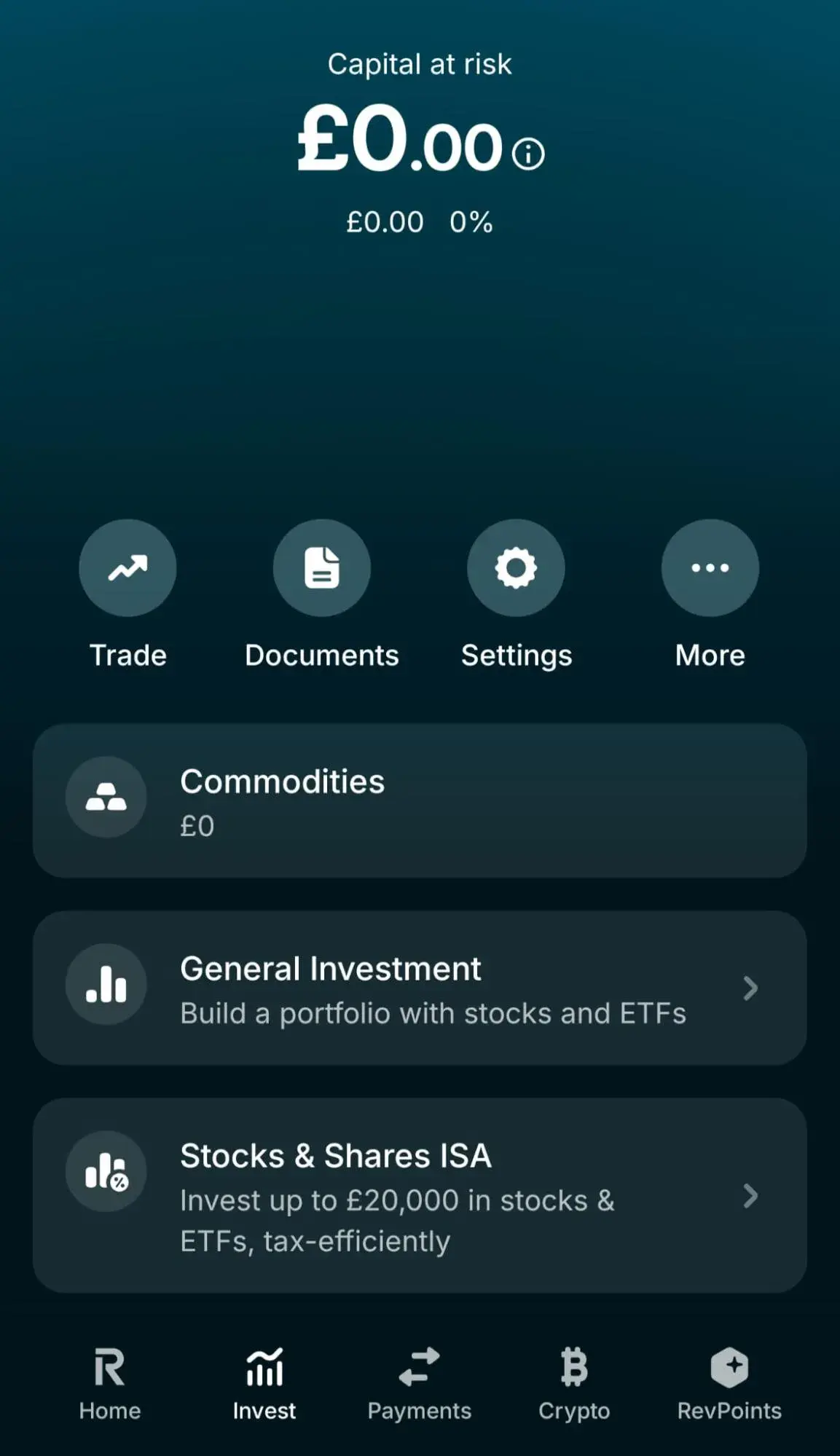
A great product feels two steps ahead of you. It anticipates your needs, offers features before you ask, and gets you from A to Z with ease.
Here’s how Revolut differentiates from other neobanks:
- Frictionless UX.
- Intuitive budgeting tools.
- Multicurrency accounts.
- A plethora of investment options you’d usually find on BlackRock or Vanguard.
- Cashback offers and purchase protection similar to a credit card.
- All-in-one wealth management app disrupting traditional banking and investment sectors.
The Branding Differentiation Lesson
No amount of advertising or marketing spend can save a bad product. Invest in your core experience. Build features that meet the standard, and go further with future-forward innovation that keeps people in the app.
2. Better Trail: Win with unforgettable content.
Differentiator: A unique blend of education, design, and storytelling
I first heard about Better Trail’s content in the TOFU community when David Broderick used them as an example of intuitive content. So, I took a look, and I was thoroughly impressed.
Google is starting to surface longer answers through AI Overviews and AI Mode, cannibalizing traffic that would usually go to websites. Better Trail, a review site that depends on traffic and commissions for survival, is doing something different to attract and keep users.
Here’s how Better Trail differentiates from other review sites:
The UX is amazing, and I love how it makes the content look more like a magazine than a blog post. If you want to quickly scan the recommendations, they've got you with skim.
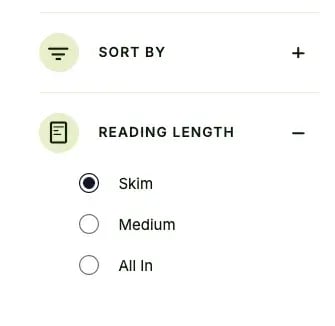
Need a little bit more detail? Choose medium. And if you have time to read the entire thing, they've got a 14,000-word banger for you.
Better Trail skips all the unnecessary SEO optimization of “what is” and “how to.” The site instead goes straight to an overview of hiking shoe superlatives, so you can quickly make a choice.
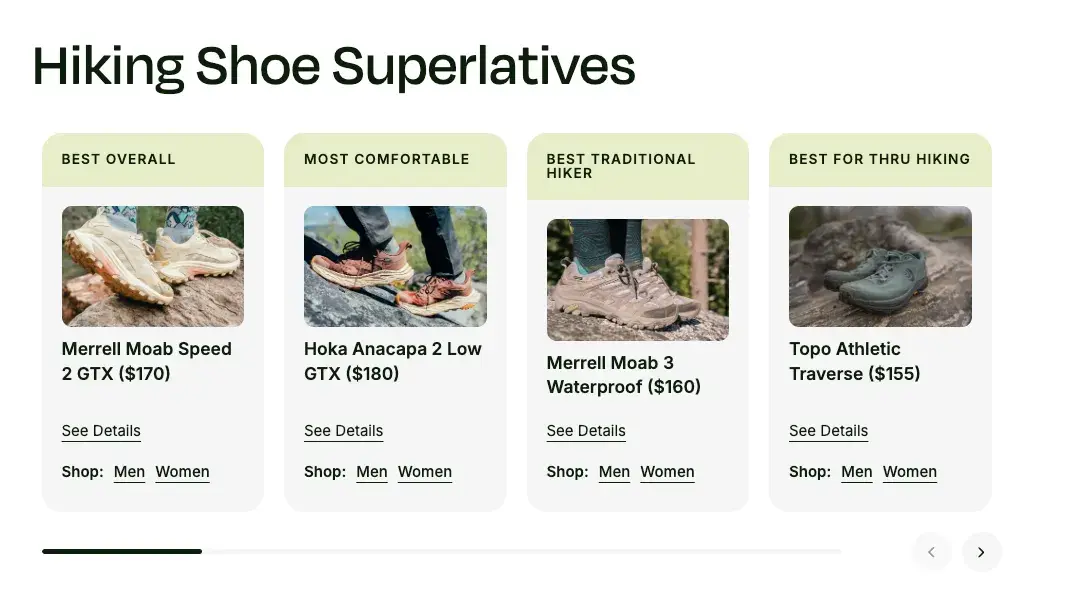
When buying a hiking shoe, you look for specific features, like comfort, foot protection, and durability. Better Trail uses a scoring system to rate each feature, making it easy to choose based on what's important to you.
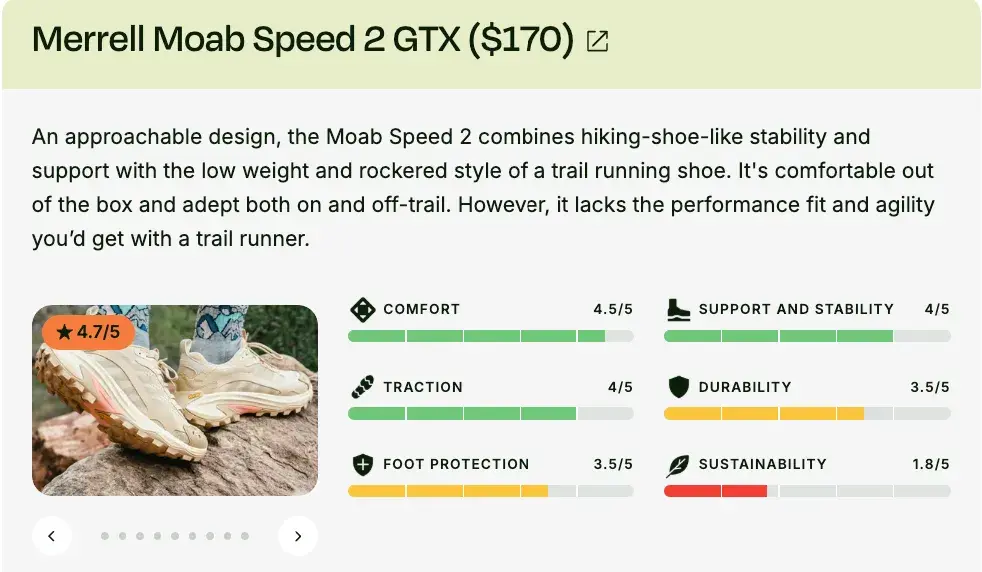
Basically, they've provided the information people look for when buying a product and removed barriers that prevent a sale, all in one go.
The Branding Differentiation Lesson
You’re not going to capture and hold attention if your content looks like everyone else’s. You need a format that feels fresh and unique.
Anticipate the decisions people are trying to make and give them answers before they even know what to ask. Finally, structure your content so it works for scanners, researchers, and power users alike.
3. Gong: Humanize your brand with internal experts.
Differentiator: Turning internal SMEs into multi-channel influencers
Revenue Intelligence is a heavily saturated niche with many competitors providing similar feature sets. Gong sits within that niche as one of the most expensive options. So, the brand differentiates and captures market share by prioritizing relationships and human-led conversations, not just pricing or features.
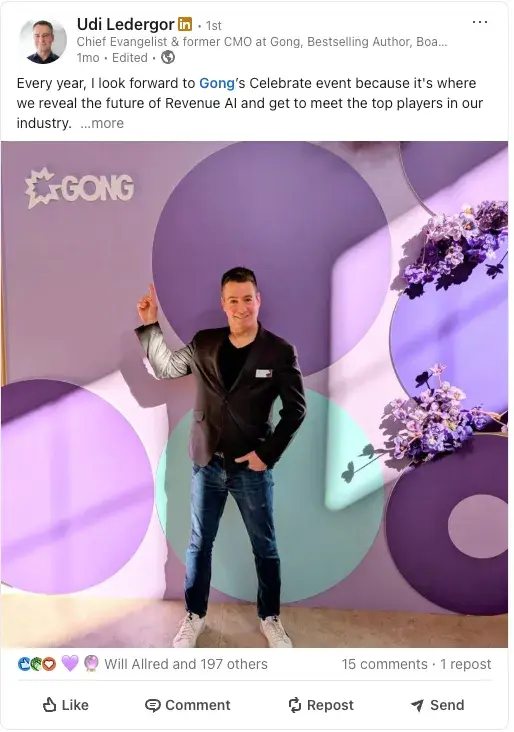
I haven’t seen another brand lean into LinkedIn the way Gong has with its internal SMEs. The first time I heard about Gong was through Udi Ledergor’s LinkedIn content. He was so engaging that I had to check out his profile.
Since then, I’ve seen other internal SMEs, like Brian LaManna (104k), JC Pollard (48k), and others post thoughtful, relevant content.
Their target audience (sales leaders) spends a lot of time on LinkedIn, so it makes sense for Gong’s AEs and marketing leaders to build a presence there.

They also show up through activation events like the Celebrate Conference, which platforms Gong’s leadership team alongside external experts.
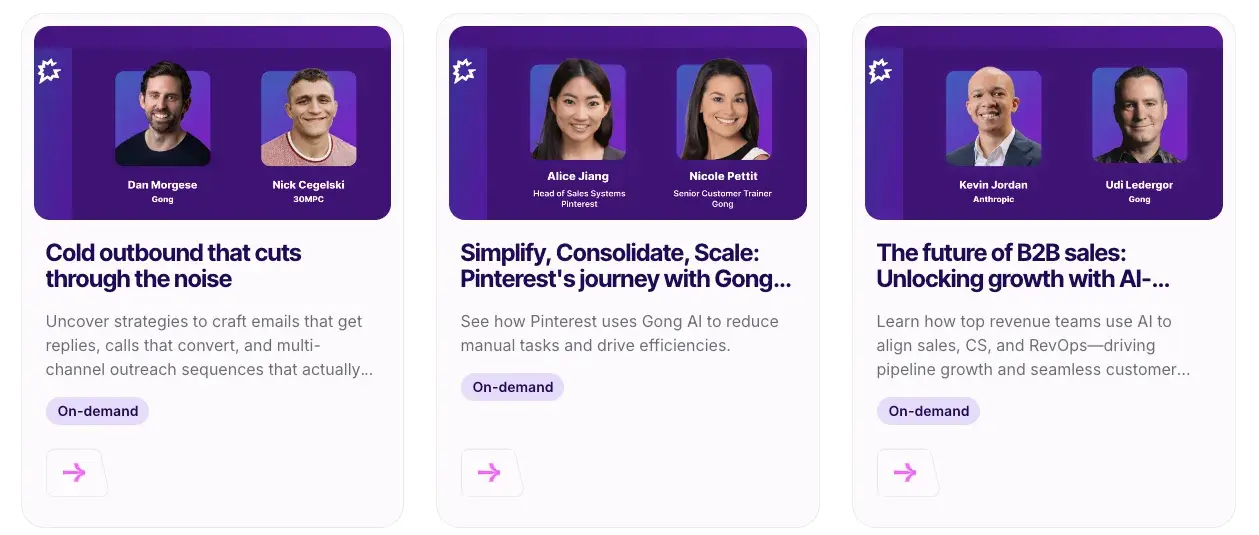
In addition, there are ongoing webinars. These digital gatherings are usually co-hosted by one Gong SME and a known industry voice. The brand also hosts smaller in-person events that create space to interact with its audience.
It’s brilliant, really. People trust people, and Gong empowers their internal experts to build thought leadership and stay top of mind.
The Branding Differentiation Lesson
Identify experts within your company who want to grow their personal profiles and leverage them to strengthen the overall brand image.
Allow them to speak in their own voice, and don’t try to censor their content. Create a program that helps them spread their influence externally through podcasts, webinars, and even public speaking.
If they show up in the places your audience is already hanging out, that’s a win for your brand.
4. Fenty: Stand for something bigger than yourself.
Differentiator: Inclusive products and campaigns that ensure holistic representation
Before Fenty, beauty brands got away with exclusion for decades. Deeper foundation shades were an afterthought and rarely existed. Even worse, the people creating products for BIPOC women weren’t part of our communities, and it showed in the existing range.
Rihanna saw the gap and built Fenty to close it.
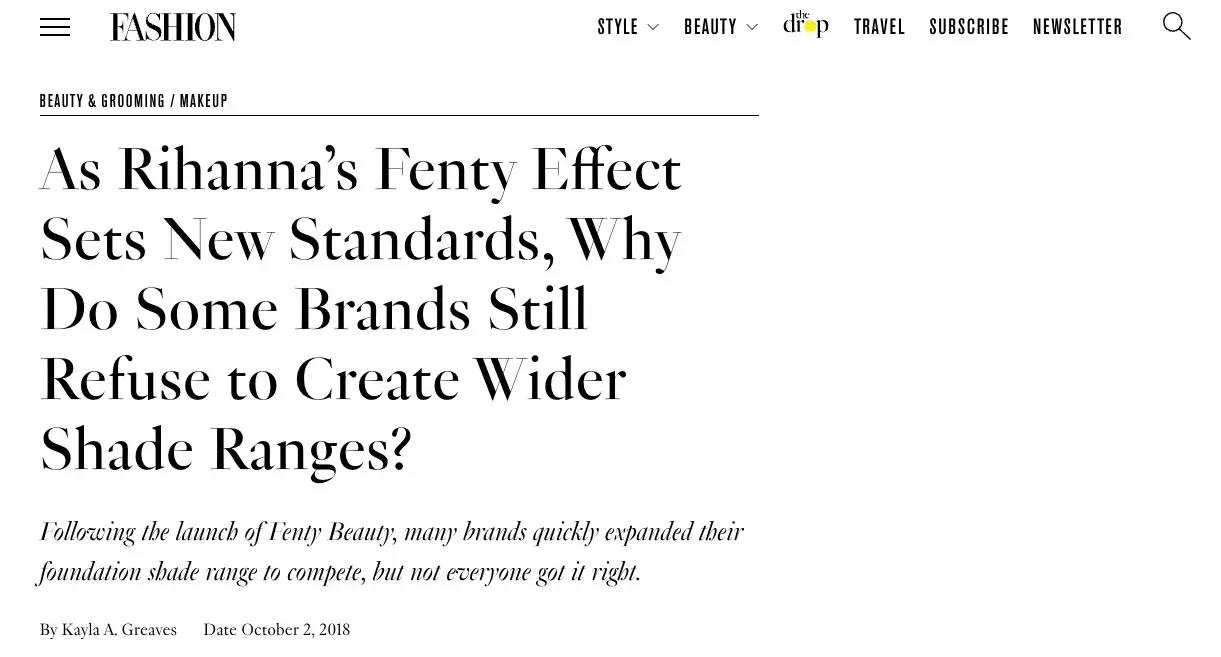
She launched Fenty Beauty in 2017 with 40 foundation shades on day one because she knew what it felt like not to find your shade of makeup in the store.
Personally, I was excited! She was a disruptor, making inclusive products that customers had been begging for, but no one had created. And suddenly, brands that had never prioritized inclusivity scrambled to expand their shade ranges.

It’s a smart move because Fenty wasn’t trying to compete with the big names. They focused on creating products for BIPOC women with shades you couldn’t find elsewhere, which allowed them to carve a niche for themselves.
Within 40 days of launching, Fenty had $100,000,000 in revenue, proof that there is a market for diverse beauty products.
But, it’s not just inclusive shades. Fenty has consistently featured plus-size models, disabled models, and talent from across the gender spectrum.

Everyone gets to see themselves in Fenty because the brand is intentional about representation.
It also helps that Rihanna uses her personal brand to maximize visibility for Fenty. She makes tutorials showing people how to use the products, which builds a sense of ownership and community around every launch.
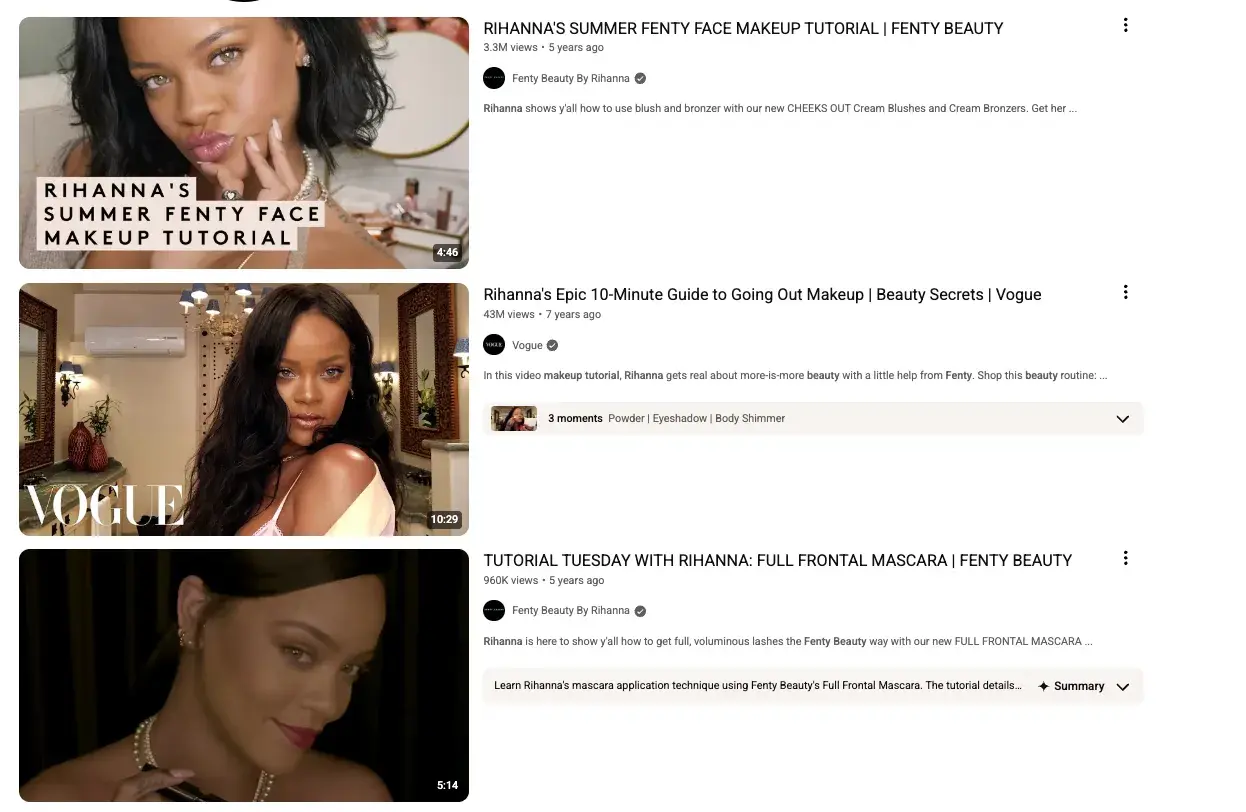
However, this only worked because the product is fantastic.
Fenty also gives back through the Clara Lionel Foundation to fund climate resilience, health initiatives, and education for marginalized communities.
The Branding Differentiation Lesson
You can’t just add a value or mission statement to your website and call it an inclusive brand. You need to start at the product level and ensure that your target audience is represented in the internal teams.
Representation and trust go hand in hand. When done right, they build a movement that turns customers into brand evangelists.
5. OpenAI: Become a habit, not just a product.
Differentiator: A tool that’s seamlessly embedded in everyday workflows
There’s a YouTube video from 2018 where Sam Altman, CEO of OpenAI, talks about what makes a great product. He says, “If a product is so good that people spontaneously tell their friends about it, you’ve already done 80% of the work.”
Friends, I’ve been on the train, in the air, and on the beach, and at each of these locations, someone was talking about ChatGPT.
There’s a pattern I’m seeing as I write this article, where the best brand differentiators are disruptors that innovate with a product so good, it turns the industry on its head.
OpenAI has done that with every product they’ve launched, including:
- ChatGPT
- Sora
- DALL·E
- Whisper
- Codex
- The API
- AI Agents
Specifically, ChatGPT has become an everyday app. For example, I use it to find healthy recipes, troubleshoot issues with my washing machine, automate content workflows, and even help with fundraising for my nonprofit, The FCDC.
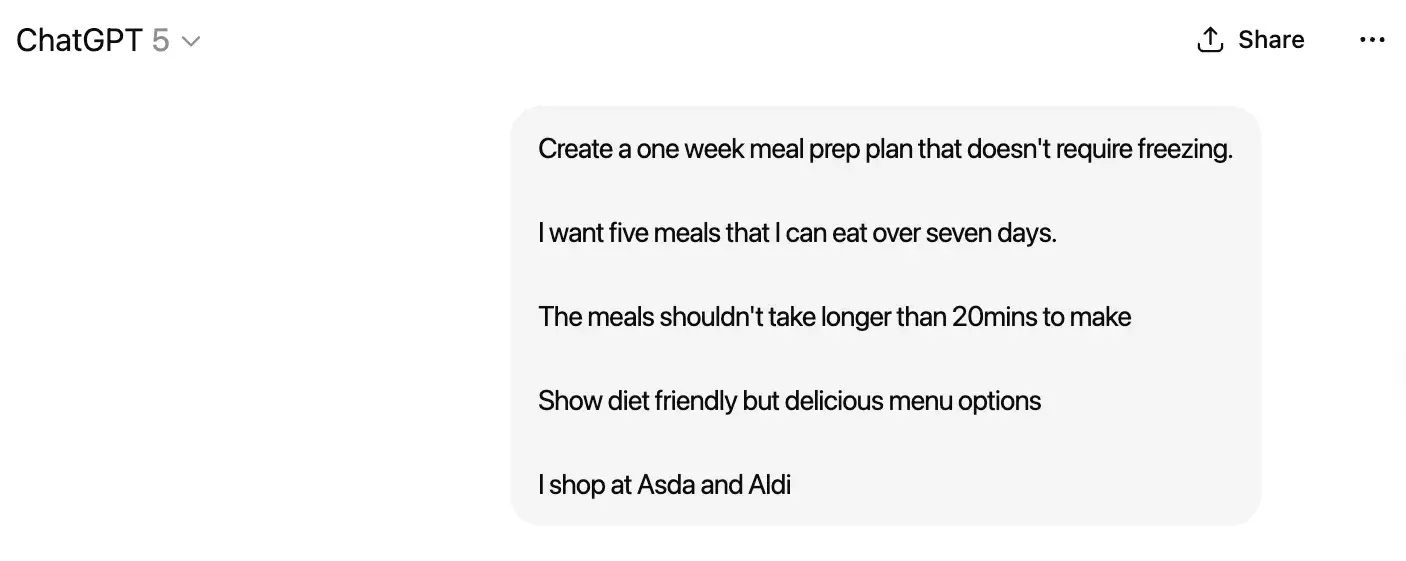
OpenAI recently released ChatGPT Pulse. Pulse will deliver personalized updates based on the user’s behavior. In my opinion, this new feature increases app usage and further embeds ChatGPT as part of people’s daily routine.
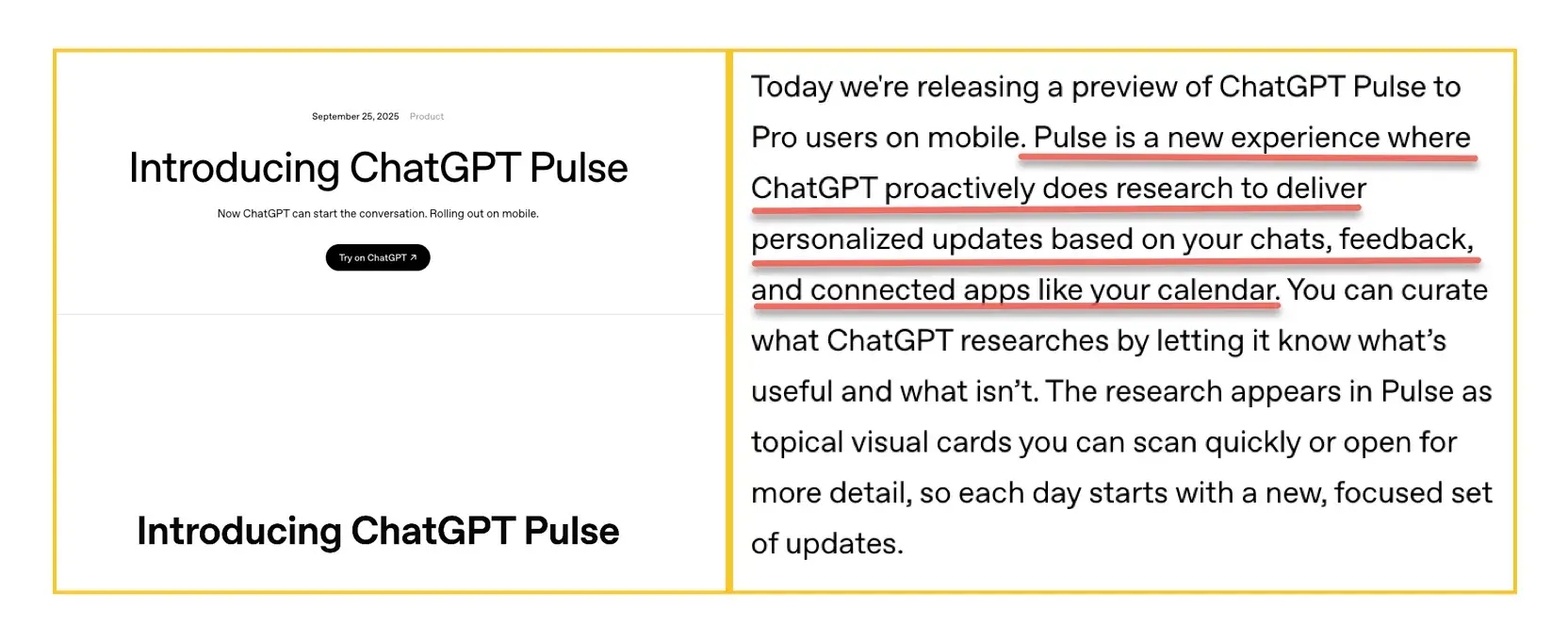
Brands that differentiate are those whose products become habits. Habit is how you rank in the user’s mind before they start a search. You want to be the first name out of their mouth when a friend asks for a recommendation.
The Branding Differentiation Lesson
The most powerful form of differentiation is when your users do the marketing for you. Focus on building a product so good, people evangelize without incentive.
6. Liquid Death: Make FUN your strategy
Differentiator: Punk rock branding for canned water
Water is essential to life. It’s something we’re all told to drink more of, yet not everyone enjoys it. A poll by CivicScience revealed that nearly half of U.S. adults consume far below the recommended amount of eight glasses per day.

The core problem is that many people don’t see water as something they want but as a routine they’re supposed to do.
Liquid Death set out to break the mold when they launched in 2019. In a U.S. market flooded with nearly 3,000 bottled water brands, the brand found white space by making water fun.
Every time I hear the word “liquid death,” I imagine myself swinging a solid-body electric guitar and playing with Brian May. That’s the brand image that Liquid Death has built.
Instead of clean, serene packaging, they gave us tallboys with flaming skulls and taglines like “Murder your thirst.”
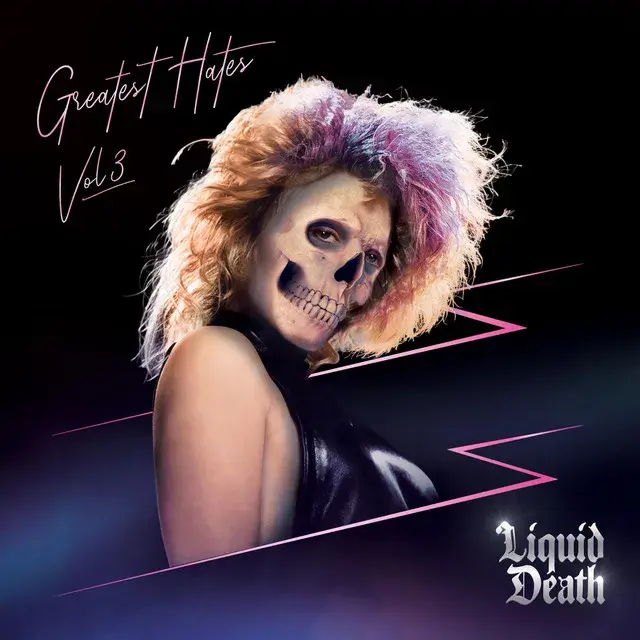
Their content is ridiculous, in the best way. They’ve dropped a metal album about hydration, launched a kids' cartoon called “Murderverse,” and even paid people to get Liquid Death tattoos.
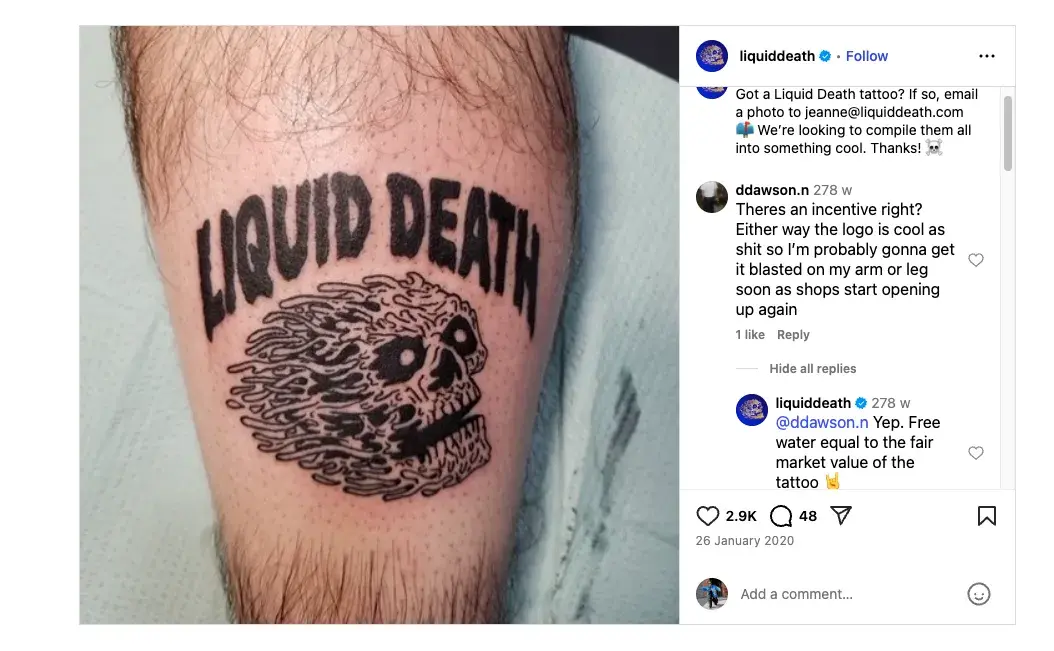
And, it works. Liquid Death now has over 14 million followers on Instagram and TikTok. In 2024, they pulled in over $333 million in retail sales, up 26% from $263 million the year before.
While most CPG brands are still trying to figure out how to connect with Gen Z and Millennials, Liquid Death has already built a cult following. The brand shows that an anti-corporate tone can work.
The Branding Differentiation Lesson
One reason people don't connect with branded content is because it's not engaging. Often, interactions feel faceless and boring.
Make your brand fun. Liquid Death’s content works because it’s true to their brand and carries over into their product, marketing, and brand identity. Even water can become a habit when it’s marketed in an engaging way.
The 8 Steps to Brand Differentiation
These steps are based on principles from “The Difference Engine”. This is a model of differentiation best practices founded by HubSpot Diamond Solutions partner, Articulate Marketing.
To start, let’s view the eight steps from a high level. Then, we’ll dive into the details, along with examples you can use to inspire your own efforts.
1. Your Mission
Google’s mission is to organize the world's information and make it universally accessible and useful. This Google example showcases a few key elements to help you define your mission:
- Recognizability: You read this, you know it’s Google’s mission.
- Ambition: “The world’s information”.
- Actions and outcomes: “Organize” “accessible”, “useful”.
- Context: Industry position (in this case, the tech sector).
- Short is best: A dozen words.
- Clarity: It’s easy to read and understand.
Your mission should be a central goal. From here, you can position your products and services, build out yearly goals, quarterly objectives and metrics for success, and develop your strategies. This is the first step. You’ll want to use this structure to define your ambitions.
Once you’ve identified your mission, everyone in your business will be singing from the same song sheet. Your collective voice will carry. Stations play your tune on the radio, the album goes platinum, you become the next Adele of … HealthTech.
It’s all within reach if you make it your mission to get there.
2. Talent and Culture
There are two sides to any brand. The first is the brand identity as it relates to customers.
The second is how your brand is positioned within your community, as an employer, and as a global citizen. In other words, the culture of your company.
Too many organizations pay lip service to culture. They offer basic benefits and post a “values” chart on the wall. It’s not enough. Talented employees will go elsewhere. But employees that enjoy a great company culture are 3.8 times more likely to be engaged. And engaged and talented people make for an exceptional business.
In fact, clients are starting to pay attention to workplace culture, too, because they want to work with happy, supported, and empowered teams — while also having business partners who are committed to shared values. It’s no longer just about cost and results, but about the types of companies people want to partner with for the long-term.
Recommendation: Consider third-party certifications, as provided by the likes of Investors in People and B Corp. Their evaluations leave nowhere to hide, so they keep you honest. Such certifications are the evidence that you really do business differently.
3. The Toolkit
The best businesses use the best tools.
Take Ecologi’s story as an example. Ecologi has established a fantastic brand differentiation strategy. They offer unparalleled transparency around carbon offsetting and tree planting with technology that showcases the great work they do. Their climate-positive mission is timely and well-targeted. What they offer is in-demand given the current environmental crisis. So they began experiencing rapid growth. Businesses want to do their part to achieve net zero. Ecologi provides the means to get there.
Although they had experienced success with HubSpot Sales Hub, they relied on multiple systems for marketing. This meant valuable data was falling through the cracks. They had limited marketing intelligence and patchy lead capture compliance. Any changes relied on dev support.
Once they were successfully brought onto HubSpot’s Marketing Hub, however, their team found they could track lead sources as well as align their marketing and sales processes. By making the most of the tools, they saw accelerated results.
Now, they can personalize campaigns to target sectors, extend their reach, and grow their reputation as a brand.
That example is just one way that tools empower a brand to stand head-and-shoulders above the rest. So, step three: audit your toolkit.
4. Strategic Blueprints
You want to have a strategic blueprint for all elements of your content and communications. These are the core guides for your positioning.
A strategic blueprint is an up-to-date document that everyone in your organization can access.
It’s up to you what you need a blueprint for. Most businesses will have these:
- Personas: A representation of your ideal customers
- Messaging: The key messages you want to get across to your audience
- Tone of voice: The attitude of your business; how you talk on all platforms
- Writing style: The words and grammar you use
- Buyer journey: The steps from first touchpoint to paying customer
Consistency is integral to differentiation. If you have a consistent brand, then it’s going to be easier to recognize, whether your audience is reading a Tweet or watching a video.
These strategic blueprints should be applied with such regularity and enthusiasm that an outsider could guess their contents.
Let’s put that idea into practice. Try this exercise. Take one of these strong brands that you’re familiar with and sketch out a persona and the journey they go on to buy, three key messages, five attitude words and a couple of notable styles, such as the use of formal/informal words:
- Innocent Drinks
- Old Spice
- Apple
Once you’ve done that, try to do the same for your business.
5. Brand Architecture
Step five is all about establishing your visual brand. This is a huge topic, but let’s ask ourselves some key questions.
When did you last update your logo? Is it simple, modern, and legible? Do you have a well-defined visual style throughout your website and other channels? Are things like your fonts and color palette defined in a brand book?
Has your website been updated in the last couple of years? Does it accurately reflect your services and your story? Is it fast loading and easy to navigate?
Like with strategic blueprints, consistency is vital. If you have a consistent visual brand, then it’s more likely to become familiar with your audience. Therefore, they will remember who you are.
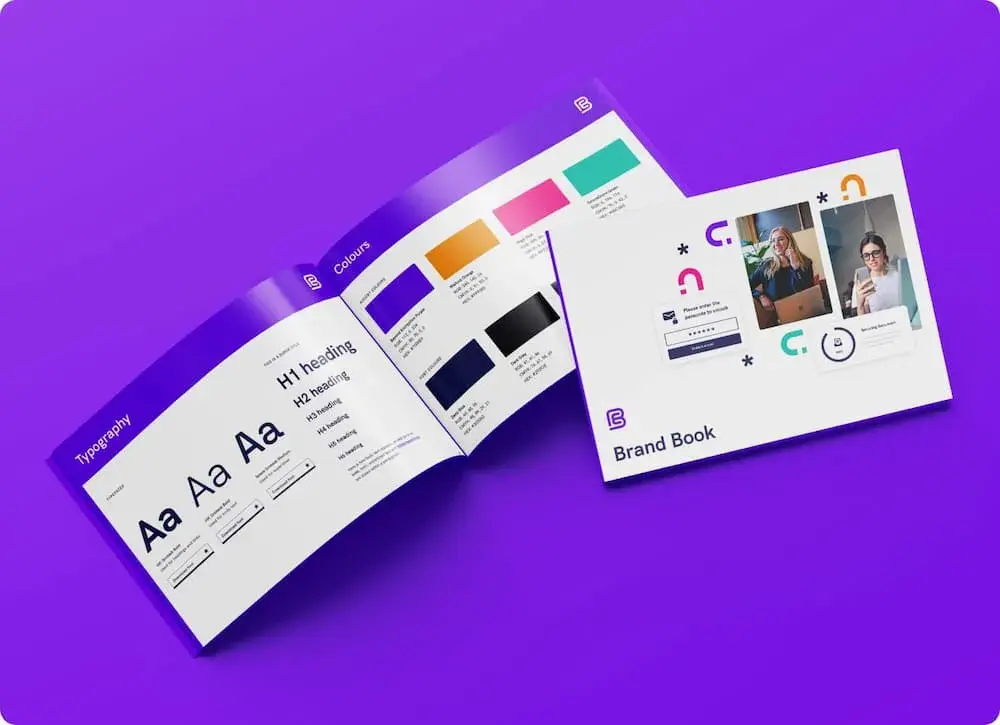
Beyond Encryption, a secure communications provider, took their visual branding a step further than most companies. Rather than having one logo and one colorway, they chose to develop a whole brand family.
Each of their product lines has its own logo and design profile; they are harmonious, yet distinct. They all flow from the same brand methodology, with the main site brand and logo as the “parent.”
Beyond Encryption uses this brand family to target segmented audiences while maintaining a clear, differentiated brand.
6. Thought Leadership
Thought leadership is a tactic content marketers use to build credibility for themselves or leaders in their company.
Essentially, thought leadership is brand positioning based on expertise.
The good thing about expertise is, unlike positioning based on price, it’s something you can leverage in a unique and thought-provoking way. It’s the route to long-term positioning that you build over time, rather than a quick and dirty race to the bottom.
Real experts have knowledge and opinions that other people are interested in learning about. Businesses with in-house experts can differentiate themselves by creating thought leadership content, like blogs and white papers, leveraging their expertise. This helps you establish credibility with your audience.
What we don’t suggest, however, is positioning based on the concept of expertise (“I’m an expert, so trust me”). Thought leaders demonstrate their expertise in tangible ways. They have certifications, and are evidence-based. They don’t just say they are experts. They show it.
The other mistake people sometimes make is to confuse expertise with complexity. This means filling your content with obscure jargon about your services. That’s not going to work, either. As Einstein put it, “If you can‘t explain it simply, you don’t understand it well enough.”
7. Lead Generation
Once you’ve got your thought leadership content out into the world, you can expect to see a growing audience coming to your website. From there, you want to capture contact details, such as people’s names and email addresses.
Here is another opportunity to differentiate yourself. The lead generation and nurturing process is where you start to see real engagement with your brand. It’s your chance to build a relationship with prospects.
So many businesses drop the ball here. They miss opportunities to get leads. Or they dive right into pushy sales tactics once they do get them. Here’s an alternative approach:
- Inform: Provide answers to questions without asking anything in return. Offer resources like eBooks or calculators. Be helpful.
- Connect: Target content that addresses your lead’s needs, implement personalization and make it easy to get to know your personality and your people a little better.
- Inspire: Give prospects a means to benchmark their business against competitors. Offer examples of success stories. Suggest a path to the ideal outcome.
8. Iterative Optimization
Lastly, let’s talk optimization.
Sir David Brailsford leads Britain’s first ever professional cycling team. At the 2008 Olympics, his team won the majority of gold medals in track cycling and did the same at the next Olympics.
Sir David Brailsford told Harvard Business Review, “It struck me that we should think small, not big, and adopt a philosophy of continuous improvement through the aggregation of marginal gains. Forget about perfection; focus on progression, and compound the improvements.”
You don’t necessarily need to shake up your whole brand to differentiate your business. You can simply make small improvements that, over time, make a big difference.
In marketing, this means observing what works, tracking and measuring the data, testing variants, and implementing the better option, every time. That’s how you go for gold.
These eight steps to brand differentiation are definitely not for the risk averse. But they are for ambitious companies and leaders who have a growth mindset.
The difference between you and every other business out there is that you’re willing to take the first step.
Differentiation only works when it’s disruptive at the core.
You have to bake your differentiating element into your brand from day one. It can’t be an afterthought. The brands winning today built products that form habits, tell stories worth sharing, and live their mission like a second skin.
Editor's note: This post was originally published in September 2025 and has been updated for comprehensiveness.

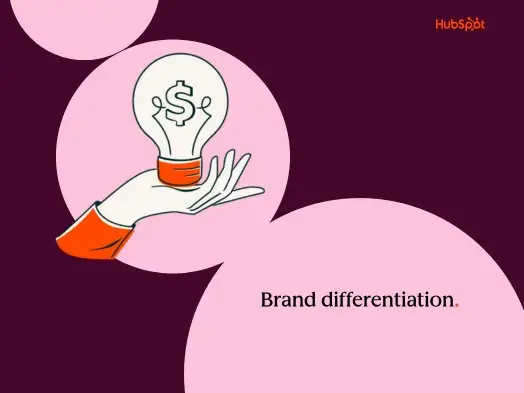
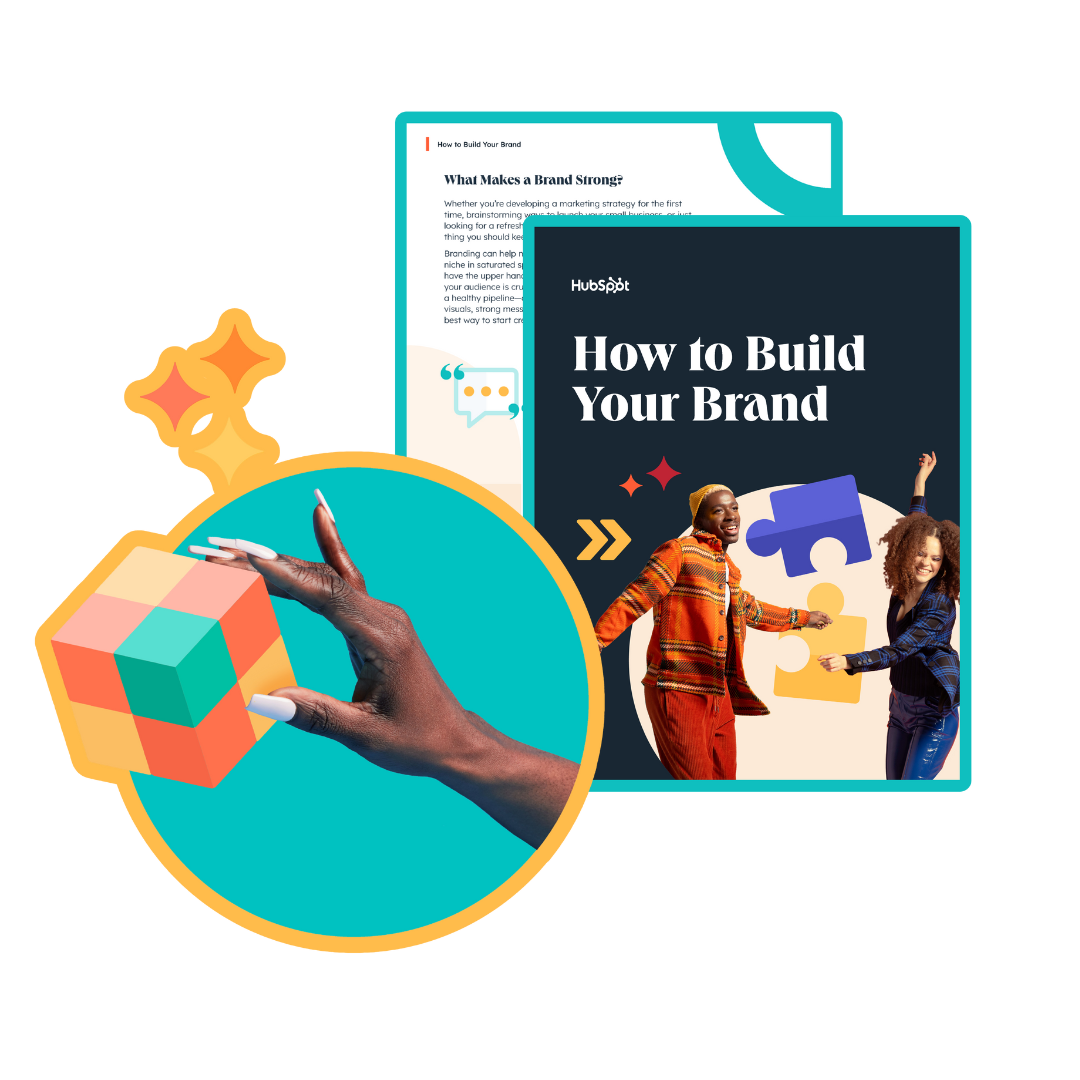
![10 creative company profile examples to inspire you [+ 8 templates]](https://53.fs1.hubspotusercontent-na1.net/hubfs/53/Operation-everest-Company-Profile-1-20250916-5779688.webp)
![14 Best Corporate Social Responsibility Examples [+Trends]](https://53.fs1.hubspotusercontent-na1.net/hubfs/53/corporate-social-responsibility-examples.png)


